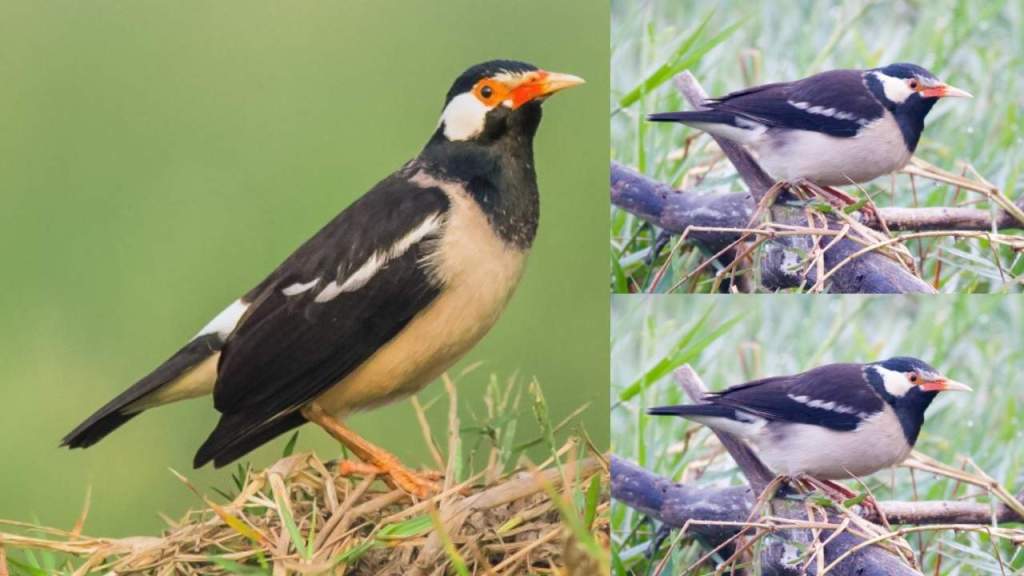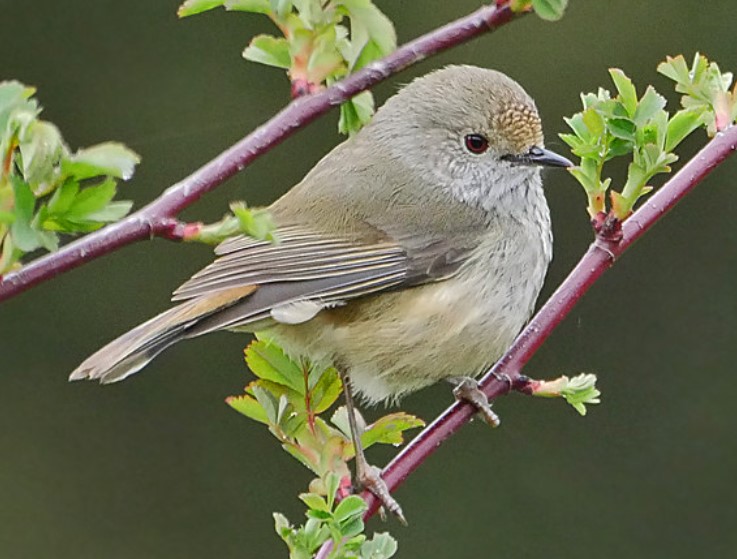Family: The Indian pied myna (Gracupica contra) is a species of starling in the family Sturnidae in the genus Gracupica.
Identification: The pied myna is found in the Indian subcontinent. Both sexes are similar. An obvious myna of pied—remarkably black and white—plumage, with a bright orange-red and yellow bill. The skin surrounding the eye is red in places where it is bare. The cheek, lores, wing coverts, and rump are contrastingly white with the prominent black upper body, throat, and breast. With circular wings, the flight is sluggish and resembles that of a butterfly. Flocks are often seen in open cultivation, plains, and foothills.
Distribution: India casts a line from Ambala to Hyderabad (Deccan) and Machilipatnam; Assam; and Burma. This remarkable myna distribution is expanding, and populations have more recently established themselves in Pakistan, perhaps with the help of the trade in caged birds and unintentional escape. The first instance of Pied Myna in Pakistan was recorded by Professor. Z.B. Mirza, who discovered the species in 1982 in Shahdara, Sheikhupura district. In recent times, it has been witnessed in Lahore in December 2023. See the video; I have captured the flock of 8 to 10 birds. Indian Pied Myna was spotted at Nasheman Iqbal Phase II Lahore.
Moreover, modern changes in farming practices and irrigation systems have contributed to their westward spread throughout India, especially in areas of Rajasthan. The species is now established in Dubai and the United Arab Emirates.
Races: There are about two races recognized on depth and other details of coloration, viz., the India-Assam race contra. The race; G. c. contra is found in east Pakistan, north and central India, south Nepal, and Bangladesh (it also includes sordida). The other race, G. c. superciliaris found in Manipur (northeast India), north, central, and southeast Myanmar, and southwest China. This race may just cross over into our boundary in South Tenasserim.
Habitat: The Pied Myna habitat is lowland, open areas with sporadic trees next to water, frequently close to populated areas. This species is frequently observed near trash tips and sewage farms. While perching on trees and buildings, they mostly forage on the ground. This species inhabits a cultivated country and is rarely found away from human habitations. Unlike the Common Myna, however, it does not appropriate dwelling houses, though it often enters gardens and compounds to hunt grasshoppers, dig up earthworms on a hooded lawn, or roost amongst groves of large trees.
It is a ground-feeding bird and much more insectivorous in its diet pattern than the mynas already described. It keeps in flocks—often associated with other mynas—in the neighborhoods of villages and towns, feeding at the refuse dumps on their outskirts or attending to grazing cattle on the moist grassy margins of village tanks. In Calcutta, particularly large hocks may be seen around the brackish lakes and in the sewage outflow locality. It has several pleasant musical notes, some of them rather like snatches from the flight song of the Finch-Larks. Their ability to consume a large number of insects makes them widely seen as beneficial.
Nesting: The season ranges between March and September, and often two successive broods are raised. The nest is very different from that of the other mynas, being a large, untidy globular structure of twigs, leaves, grass, and rubbish. It is placed on an out-hanging branch of a mango or similar large tree near cultivation, 15 to 30 feet from the ground. Together, these mynas establish communal roosts at night and guard nesting areas.
Eggs: The birds do not nest in colonies as such, but it is not unusual to find 3 or 4 nests on the same tree. The eggs—four or five in number—are a glossy blue, without markings. Both sexes share in building and taking care of the young. The eggs take 14 to 15 days to hatch. The female spends the night at the nest while caring for the young for two weeks.
Vocalizations: Like common myna, it generates a variety of liquid note calls. The flocks often call loudly, using a variety of sounds such as whistles, trills, buzzes, clicks, and warbling calls. However, the young birds have been trained to mimic the melodies of other birds.
In Culture: Since the Sema Nagas (the ethnic group of the Indian State of Nagaland) consider this bird to be a human reincarnation, they will not consume it.
Other Names: This bird is also known as pied myna or Asian pied starling.
Courtship: Indian mynas use calling, feather fluffing, and head bobbing as part of their courtship rituals.
Size: The pied myna is slightly smaller than the common myna.
Read More: Starling Birds – Saints or Sinners?







